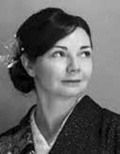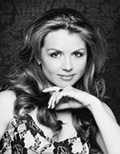All exhibitions
Coordinates: Japan. Space of Meanings
September 5 - October 27, 2018
Rating: 6+
Curators: Irina Klimenko, Galina Merzlikina
How little do we know about Japan and are we ready to embrace all things Japanese? To comprehend a foreign culture you first of all need to discover the coordinate system that these people see the world through.
The exhibition Coordinates: Japan. Space of Meanings, which was held as part of the Year of Japan in Russia, offered an opportunity to decipher cultural codes of Japanese aesthetics and get a closer look at your inner self. The inward-oriented Japanese view of the world was described through categories of external and internal space. A space where every little thing matters. All of these signs, symbols, allusions, and codes, can a non-Japanese ever discern or understand them? Interdisciplinary exhibition Coordinates: Japan. Space of Meanings was an attempt made by Russian photographers and designers to get closer to the internal spaces of Japanese aesthetics and transform them into their personal feelings.
Irina Klimenko used pictures she had been taking in Japan for a decade to create a space of thought experiments and visual experiences as she looked to give the visitors an opportunity to get closer to the emotionality of Japanese aesthetics and feel the depth and truthfulness of their own inner emotions.
Each hall where works were put on display had its own title derived from the senses the works appeal to. The first floor was all about contemplation, and the first two halls, titled Immersion and Contemplation, prepared the visitors for the ritual of "purification of vision by contemplating beauty."
On the second floor, the hall titled Naming Things was a place where visitors could play a game of giving names to the things they saw using the Japanese poetic canon and write down their associations on boards. The hall titled Concealment contained things that cannot be seen or expressed in words. This holds true for the aesthetic comprehension not only of philosophical concepts but also of more tangible things and phenomena. For example, the aesthetics of the kimono and the concealment of the female body. It was here that fashion designer Maxim Rapoport's collection of Japanese silk kimonos Four Corners of the World and Olga Berg's collection of crystal masks were put on display.
While the first and second floors were filled with sensory experiences and color, which takes precedence over form in Japanese aesthetics, the third floor offered more sophisticated sensations such as the aesthetics of asceticism, wabi-sabi and emptiness.
Brimming with visions and associations born from within, and having felt the hidden possibilities of what might be, the visitors eventually arrived at their final destination, the Space of Meanings. Blank space is one of the central motifs in Japanese art. It has a meaning of its own as artists use their entire palette to achieve emptiness instead of depicting worlds, something European art does. The importance of empty space is further highlighted by the use of shadows. Shadows engender a sense of mystery, they promise a plethora of possibilities that lurk in the dark and may materialize.
The exhibition also featured floral arrangements made by Urana Kuular, a master and teacher of the Sogetsu school of ikebana. KATSU was both a partner of the show and one of its participants; it is a brand that creates items with minimalistic and nature-inspired designs generating a harmonious environment both in terms of visual perception and tactile sensations.
As part of the exhibition, some of today's leading art historians gave a series of lectures on the philosophy of Japanese aesthetics; a series of lectures and workshops were also held on photography, architecture, calligraphy, and video art.
 |
Irina Klimenko is a fine art photographer, curator, co-founder of the immersive travel project in Sense Space (Japan), organizer of the art photography fair PhotoDecorMarket (Moscow). Irina's works are exhibited at the international art photography festival in Arles (France) and as part of the parallel program of the Venice Architecture Biennale. She has released photobooks Inner Silence and Qualia. |
 |
Galina Merzlikina is a curator and organizer of art exhibitions, festivals, projects and contests of Russian and international art both in Russia and abroad. She is a co-founder and curator of POP UP MUSEUM. "I've been thinking about making an exhibition like this since I saw Irina's photos for the first time. Her photos live in time and with time, within and without space; they are a bottomless source of meditation, development and self-understanding." |
 |
Maxim Rapoport is a director, designer, stylist, television personality, and organizer of international art projects. Maxim is a degreed director of shows, film and multimedia. He is also a professional fashion designer who graduated from the Fashion Lab by SLAVA ZAITSEV. In 2004, Maxim Rapoport founded his eponymous fashion brand. The philosophy of the brand is based on the desire to create unique, inimitable garments, which are free from temporal space. |
 |
Olga Berg is a designer and artist. Olga's creative work originates in the traditional technique of bobbin lace, which dates back to the 12th century. This time-consuming, meditative manual process of making lace with pearls and Japanese beads produces unique timeless pieces, each possessing its own distinctive energy and personality. It is a centuries-old tradition, which is not only still very much alive but also has a lot of potential for being updated and reinvented. |
 |
Urana Kuular is a master and teacher of the Sogetsu school of ikebana and the Omotesenke tea ceremony school, a specialist in Japanese gardens, and a landscape designer. She is a student of the legendary professor, Midori Yamada. She teaches tea ceremony at the Japan Foundation in Moscow; she is a member of the International Sogetsu Teachers' Association and the Japanese Garden Association (Japan). |
The curators of the exhibition express their gratitude to the Ekaterina Cultural Foundation and its co-founders Ekaterina and Vladimir Semenikhin for helping organize and stage the project.
For more information, please contact:
Irina Klimenko - +7 (985) 784-19-99, klimenko31@gmail.com
Galina Merzlikina - +7 (910) 446-09-17, galya.merzlikina@gmail.com








































